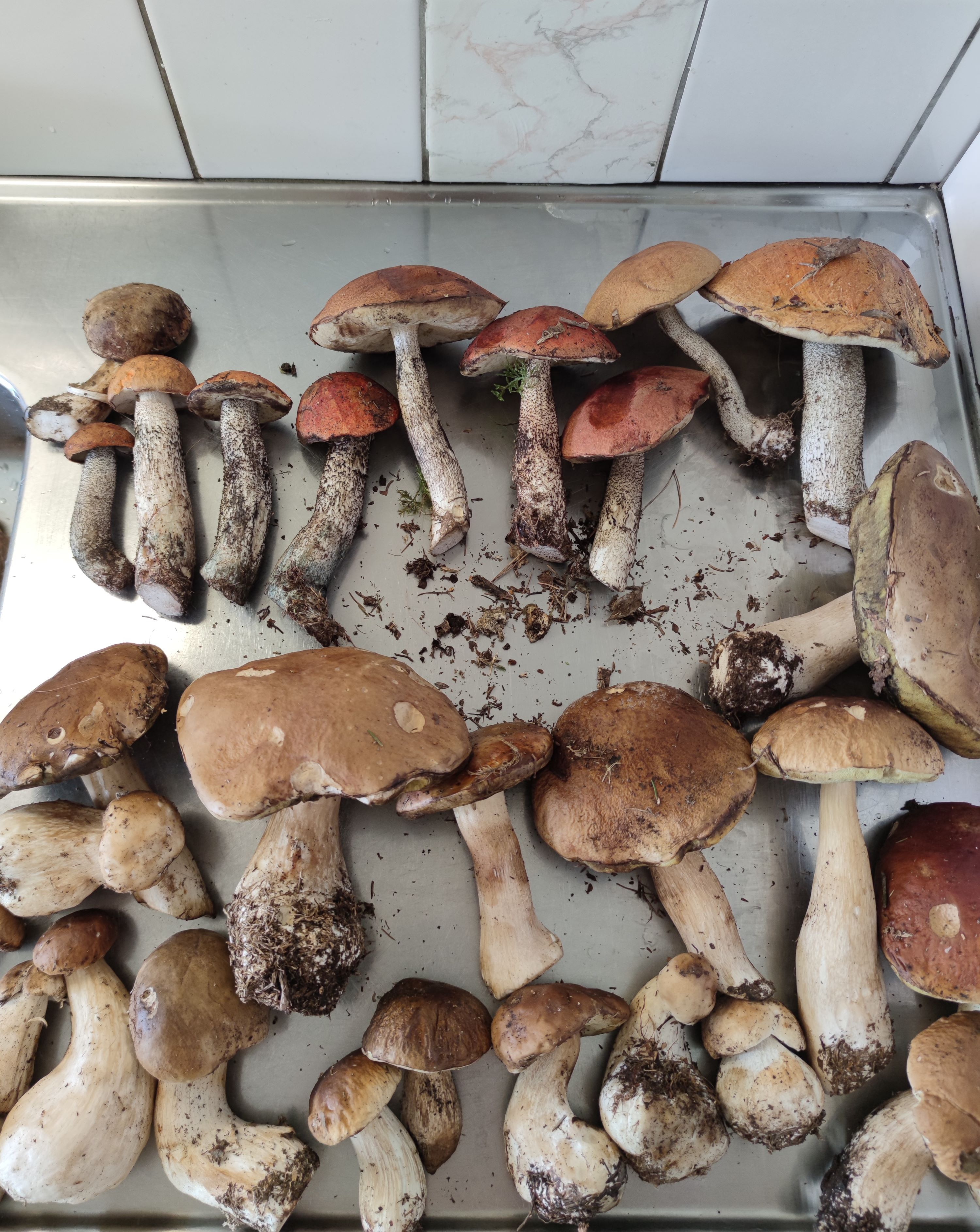Before the mushrooms, there was water. As soon as we arrived at Gladö Kvarn, we saw a lake—still, silent, and gleaming like a mirror between the trees. Later we learned that this was no ordinary lake. It was the stage for a local crayfish celebration—kräftfiske—a tradition we unfortunately missed this year. Next year, we’ll try to time it better.
Mushroom picking and crayfish parties are like two sides of the Swedish summer coin. One is about solitude, quiet footsteps, and a gaze fixed on the forest floor. The other is about paper lanterns, bibs tied at the neck, laughter echoing over water, and the satisfying crack of red claws under lantern light. A true contrast, yet somehow both belong to the same rhythm of the season. (Here’s the link to this charming tradition).
https://gladokvarn.wordpress.com/fiske-kraftfiske/
There’s a certain stillness in the forest at the end of summer. The air feels thicker, the light softer, and the soil beneath your feet carries that unmistakable scent of damp moss and pine needles. It’s the season when Swedes quietly disappear into the woods, baskets in hand, and reappear hours later with smiles, muddy boots, and hopefully a good haul. Mushroom season has begun.
Yesterday we drove out on the friendly suggestion of a Swedish friend. That, in itself, was remarkable. Anyone who has ever asked a Swede about mushroom picking knows the usual response: a polite smile, a vague gesture toward “the forest somewhere over there,” or complete silence. Mushroom spots are treated with the same secrecy as bank codes. Which is why this tip felt almost magical, like being trusted with an unspoken ritual.
Still, perhaps it’s not really about secrecy at all. Maybe locals think: “Come on, you don’t need me to tell you a spot. Mushrooms are everywhere if you just open your eyes.” And they’re right. Once your gaze adjusts to the rhythm of the forest floor, you realize it’s not about maps or secret trails—it’s about slowing down and paying attention.
Not long after stepping off the path, we were greeted by the forest’s royalty: Karljohan mushrooms—Sweden’s king of fungi, beloved in Italy as porcini. We found them in several varieties: Boletus edulis, with its thick creamy stem; Boletus pinophilus, the red-tinted beauty often nestled near pines; and Boletus leccinum, lighter in tone with its orange cap. The names sound like poetry, but what mattered in that moment was the sight of their proud reddish-brown crowns breaking through moss and lichen.
We picked carefully, cutting each stem from the soil while leaving the underground network intact, giving it a chance to grow again. Each find carried its own small thrill—like a gift waiting patiently under the trees.
After a while, we stopped counting. The basket grew heavy, the earthy aroma of fresh mushrooms rising with every addition. By the end of the walk, we had gathered around six kilos. But the forest, ever the teacher, reminded us who’s really in charge. Nearly a third were riddled with parasites. Back they went, gently scattered into the undergrowth, recycled into the circle of life. Nothing wasted.
We spent nearly five hours wandering the woods. At one point, we felt lost. Not panicked, just pleasantly adrift—the kind of lost that only comes when you stop caring about time. But with one quick glance at Google Maps, the forest’s trick was revealed. We hadn’t been further than a kilometer from the lakeshore. Our entire walk had been looping, circling, spiraling the same body of water, as if the forest wanted to keep us within its embrace.
There’s a lesson in that. Mushroom picking is an activity that makes you look down. Eyes trained on the soil, scanning for hints of color, your mind slips into a rhythm of browns and greens. It’s easy to lose your sense of direction. Which is why a small but important tip: always carry enough battery on your phone. The forest is generous but humbling. You can find food, beauty, even peace. But you can also lose your bearings in an instant.
By the time we carried the basket back to the car, shoulders tired but hearts full, we realized the forest had given us more than mushrooms. It had given us time. Time to walk without hurry. To get lost without fear. To find something we weren’t looking for.
And maybe that’s why mushroom season holds such affection here in Sweden—and in Italy too, where the same Karljohan finds its way into butter and garlic, risottos, or layered between pasta sheets for a lasagna richer than words. It’s not just about the food. It’s about stepping into a tradition older than recipes. It’s about gathering, preserving, sharing.
Because what do you do with six kilos of mushrooms, even after discarding the wormy ones? You preserve them. Slice and dry them, freeze them, pickle them. You cook them into creamy sauces, velvety soups, or fold them into risotto. And yes—lasagna. Imagine a mushroom lasagna with a smooth béchamel, Parmigiano melting into golden edges, and a touch of sage, rosemary, and black pepper to bring warmth. A Swedish-Italian hybrid, earthy and fragrant, that feels like home in both languages.
For us at Lasagnariet, mushroom season is more than a walk in the forest. It’s another layer in the story we’re building—a story of homemade food, from scratch, with love. A story about using what nature gives us, respecting it, and turning it into something comforting to share.
Because food doesn’t start in the kitchen. It starts in the soil, in the forest, in those moments when you think you’re lost, only to realize you’re exactly where you should be.
Life is made of layers – in the forest, in the kitchen, and on our plates.

